Published Jun 29, 2018
Take a Ride in The Jupiter 8
Take a Ride in The Jupiter 8

Good evening, ladies and gentlemen. Direct from StarTrek.com, and in color, we bring you the Jupiter 8, brought to you by “Name the Winner,” premiering live from City Arena, tonight at 7PM Eastern.
And just what is the Jupiter 8, you ask?
Well, it’s the automobile with a performance that’s unexcelled in its field. Keep reading and you’ll see why you absolutely must have one… a real citizen would, or he’d die trying.
In Star Trek: The Original Series, the Jupiter 8, of course, was the futuristic car featured in the episode “Bread and Circuses.” If you recall, it was first seen on the main viewing screen in the teaser when Uhura intercepted a black and white television signal showing news footage from the planet 892-IV.
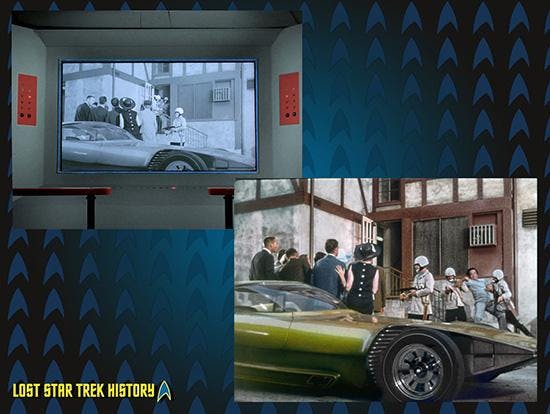
And then later in that episode, in Act I, we saw it advertised in color in the pages of the fictitious magazine, The Gallian.
But what was the Jupiter 8 in reality? Was it a real car or was it merely a hollow prop?
Well, it was – and still is – an amazing, award-winning, real automobile called the Reactor. It was built by Gene Winfield, a man who’s known for other significant contributions to TOS, and it’s become a famous star in its own right. Buckle up as we take a brief look at this car and its builder.
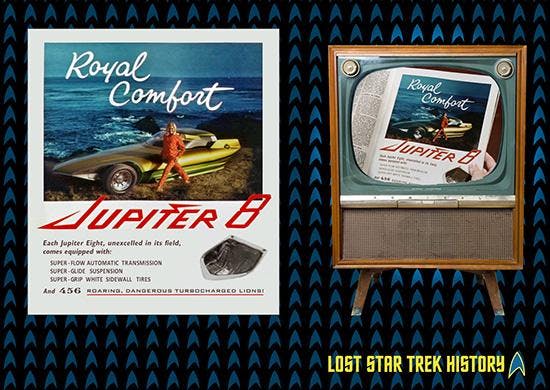
Gene Winfield
Robert Eugene Winfield – born in 1927 in the midwestern United States but raised in California – is a car customizer, painter and race car driver who noticed automobiles at a very early age. In fact, his first car purchase – a Model A Coupe – occurred when he was just 15 years old.
Winfield’s interest in customizing cars and building hot rods accelerated in high school and, following a year-long stint in the Navy after graduating (in 1945), he opened a car shop behind his mother’s house in California. It was then and there that Winfield began getting serious about professionally modifying and reshaping cars for both himself and his friends. Shortly afterwards, in about 1949, Winfield began racing his creations, but in 1953, following a tour in the U.S. Army, he married and abandoned that pursuit. At that point, he took up customizing full-time in a shop near Modesto, California.
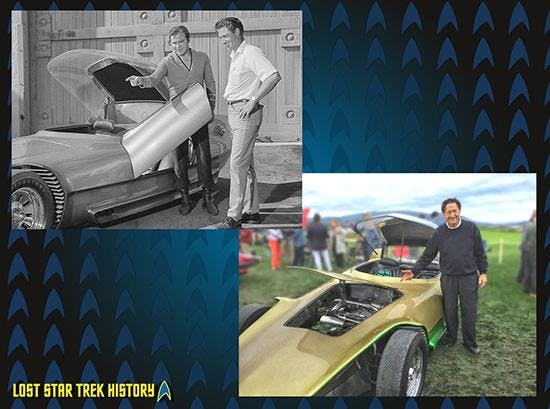
In 1962, Winfield’s life took a significant turn when he was hired by Aluminum Model Toys (AMT) to design model car kits and full-scale promotional cars in Phoenix, Arizona. The importance of this to Winfield – and to Trek fans – is that his work there introduced him to the Hollywood scene and, as a result, he began making cars and other props for television and movies, including for TOS. He became quite successful at this endeavor, and other shows and movies in which his creations can be seen include The Man from U.N.C.L.E., The Girl from U.N.C.L.E., Get Smart, Trancers, The Last Starfighter, Star Man, Robocop, Back to the Future, and Blade Runner, to name a few. (A few more will be named shortly.)
Today, Winfield is still active and works from a car shop in Mojave, California.
Winfield’s Other TOS Contributions
As previously mentioned, Winfield made other contributions to TOS. In addition to his Reactor appearing in “Bread and Circuses,” he co-designed (along with art director Matt Jefferies and industrial designer Thomas Kellogg) the Galileo shuttlecraft, and he was also responsible for its fabrication. Additionally, he constructed the master tooling models for the D7-class Klingon ship that had been designed by Jefferies, one of which was featured in TOS. All of this work was done while Winfield worked at AMT.
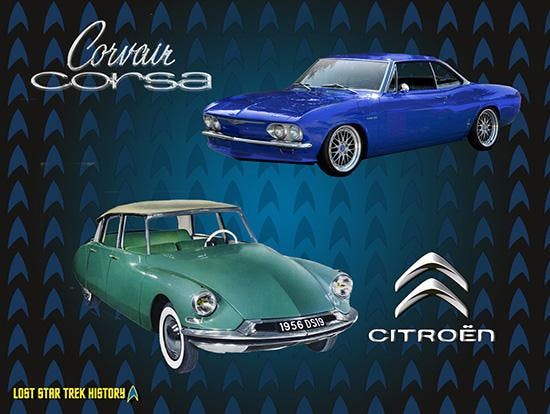
The Jupiter 8, AKA, the Reactor
The Reactor (originally named the Autorama Special) was designed by Ben Delphia, for a client, and built by Winfield in 1965. Winfield based the car on a modified chassis from a 1956 Citro?n DS and a flat, 180 horsepower, turbocharged, air-cooled engine from a 1965 Chevrolet Corvair Corsa.
Although the Reactor was designed to be a show piece, Winfield also made sure it was engineered to be functional and useful. In addition to the previously mentioned features in its original design and build, others include:
• A hand-formed aluminum body that is painted metallic lime green with dark green shading around its edges• Two seats• Front-wheel drive• Four manual speeds• Three flush mount foot pedals for brakes, gas, and clutch• Electrically-operable lights, doors, hood, and roof• A hydro-pneumatic suspension system so that the car could lower and raise from 4 to 9.5-inches, the latter used for driving• A swivel-mounted handgrip steering mechanism• A weight of ca. 2000 pounds• A 1965 price of $20,000 (allegedly)
Winfield eventually purchased the Reactor and it survives today. It can be seen at car shows and other exhibitions around the country.
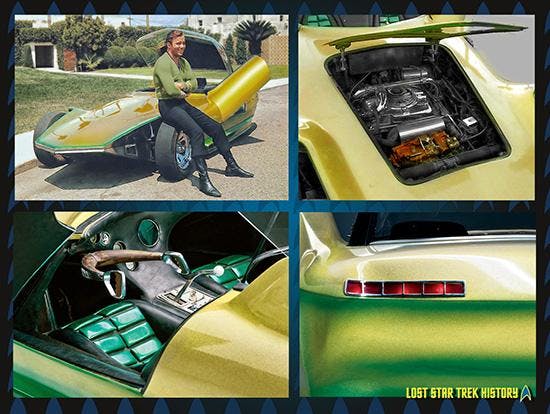
The Reactor's Other Roles
TOS was not the Reactor’s first gig. In fact, it was actually one of the last in that time period. Other notable television shows in the mid-1960’s where the Reactor appeared include:• Bewitched, 1967, in the episode “Super Car” where it appeared as the Reactor Mach II• Batman, 1968, in the episode “The Joke’s on Catwoman” where it played the Kitty Car (a dressed up “catmobile”)
(We want to point out that, contrary to what’s been reported in some other sources, the actual Reactor vehicle did not appear in either the 1968 Mission: Impossible episode “The Freeze” or the 1967 The Flying Nun episode “Old Cars for New.”)

David Tilotta is a professor at North Carolina State University and can be contacted at david.tilotta@frontier.com. Curt McAloney—an accomplished graphic artist—resides in Minnesota and can be reached at curt@curtsmedia.com. Together, Curt and David work on startrekhistory.com. Their upcoming book, Star Trek: Lost Scenes (due out in August 2018 from Titan Books), will be filled with hundreds of carefully curated, never-before-seen color photos that they use to chronicle the making of the original series, reassemble deleted scenes left on the cutting-room floor, and showcase bloopers from the first pilot through the last episode.

